Watch Eva Toorenent explain the importance of storytelling in illustration
Illustrator Eva Toorenent (Evaboneva) shares her process for designing fantasy creatures by first devising a backstory.
Eva Toorenent (artist name Evaboneva) is a professional illustrator and concept artist creating original and inventive creatures. She believes storytelling is important to creating believable fantasy characters and critters. In her video (above) Toorenent discusses her approach to devising new characters, how she approaches creating the backstory, crafting a 'word web' to build the narrative and detail, then she begins painting.
Toorenent is a traditional artist (she does also paint digitally) who uses watercolours to create her creature art, if you want to follow along then read our guide to the best watercolour paints, best acrylic paints, and best pencils for artists.
If you don't want to watch Toorenent's fantastic video workshop, then you can read a full transcript of her tutorial below, and read through this artists creative approach in her own words.
Why is storytelling so important in art?
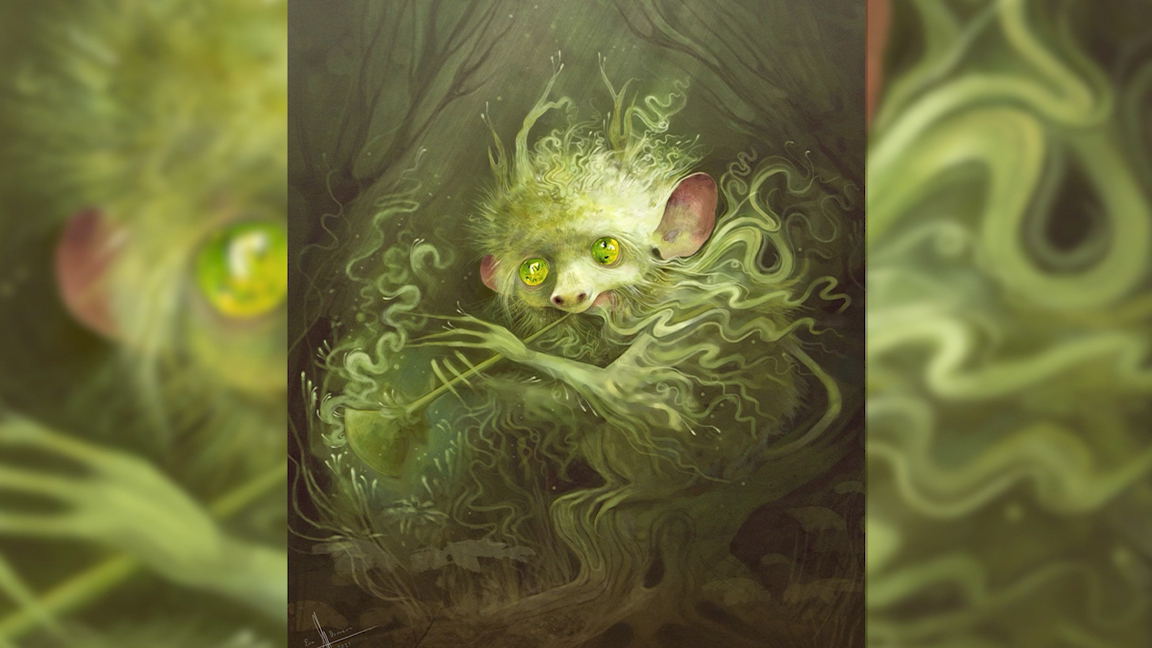
If people connect with your work emotionally, your art will have a much more significant impact. One of the ways to have people emotionally connect to your art is to add storytelling. Getting an emotional response from your audience with your art is extremely important.
Humans remember art and stories that made them feel a certain way. Stories are what stick with people. This is also why myths and stories like King Arthur, Shakespeare's work, and Sleeping Beauty have stood the test of time. These tales have resonated so much with people throughout the ages that they are still prevalent in our culture today. Storytelling is an incredibly powerful tool if applied correctly.
By adding storytelling to your art, you are putting a personal touch that only you can give to your work
Even when you are an incredible artist with one of the highest levels of skill, if your art does not connect emotionally to people in any way, they will not remember it the next day, week, or year. You want your art and stories to stick with them. Make an impact, and make yourself stand out among your peers.
By adding storytelling to your art, you are putting a personal touch that only you can give to your work, which will make you stand out. Anybody can create a beautiful painting, but only you can tell your story.
Get the Creative Bloq Newsletter
Daily design news, reviews, how-tos and more, as picked by the editors.
There is this great quote from Charles de Lint I want you to keep in mind: "Don't forget - no one else sees the world the way you do, so no one else can tell the stories that you have to tell."
Why is backstory important for your character?
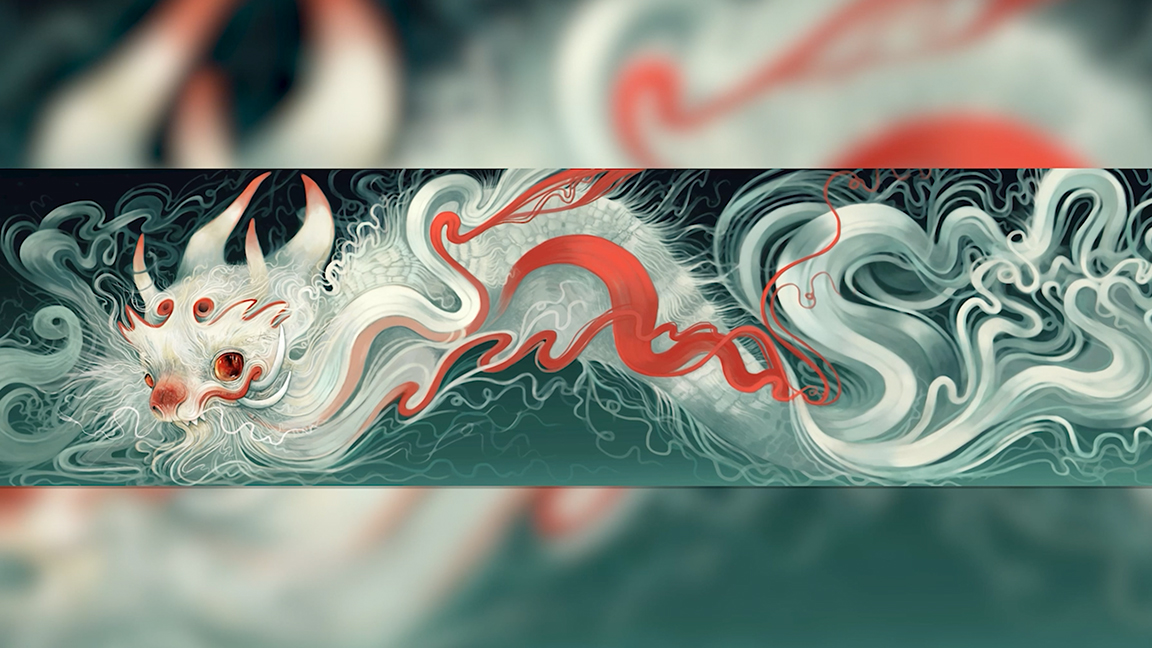
There is this great youtube skit where a guy explains in quite a humorous way that if you take a rock, put googly eyes on it, and give it a name and a family, it will create an instant emotional connection with the audience. And if you then destroy that said rock, people who actually get sad. It is not just a rock; it is a rock with a backstory.
The video pokes fun at movie directors and executives, but there is some truth in that approach. And I myself have to admit that I felt kind of sad when they said that rock (with a wife and kids) was destroyed.
This video, although a parody, showcases how it can be pretty easy to have your audience connect to your character. For each emotion you want to convey with your work, there are visual things you can do to evoke said emotion. Usually, the way I approach it is to put one visually defining thing with my character, or I change the autonomy of the character to fit the story.
I mostly create creepy cute art, so the things I add are usually to make the character more adorable or more creepy. If you want to make the character look sadder, you can put visual stuff around the character that evokes sadness, like dead animals, something related to water/tears, tissues, etc. And you can apply this to the whole range of emotions.
Share your stories visually and also in writing
A picture says a thousand words, which is most definitely true. The golden rule is: Show, don't tell. But sometimes it is good to tell. Since I was a child, I have written stories. But unfortunately, I was not the best writer.
I am pretty dyslectic and struggle with text and speech in general. But I have always loved to make stories. Because writing them down was difficult for me, I overcompensated by telling my stories visually. Nobody would comment on my spelling if I told my stories with my art.
When I just started posting my art on Instagram, I did not share my stories and additional details from my artwork online; I kept these stories to myself.
Seeing how your work and stories connect with people, bringing them to tears or laughter, brings magic to this craft
But something interesting happened; people in the comments started asking me questions about my creatures. Usually, I could answer their questions in great detail because I had already fleshed out the story of the monsters; I just never wrote it down. I noticed that the more backstory I gave the creature, the more it would connect to people.
Even though my technical skills could have been better at the time, I noticed that story could make up the difference. Now that I have improved my craft these past couple of years. The story still does most of the heavy lifting in my work.
By sharing my work and stories, I have grown as a storyteller. Seeing how your work and stories connect with people, bringing them to tears or laughter, brings magic to this craft. What I absolutely adore about storytelling is that each person has a different reaction to a story, because of their different life experiences.
It has been more than once that by talking to a fan or follower, the story of my creatures has become richer and more interesting. It can grow and inspire others and yourself if you bring your story to the public. Which is why I recommend you share yours. Visually and in writing.
There are three different ways I create my stories and how they originate, The idea , The accident and The grower. Below I detail how each one can affect the design of my creatures.
The idea: the handwash monster
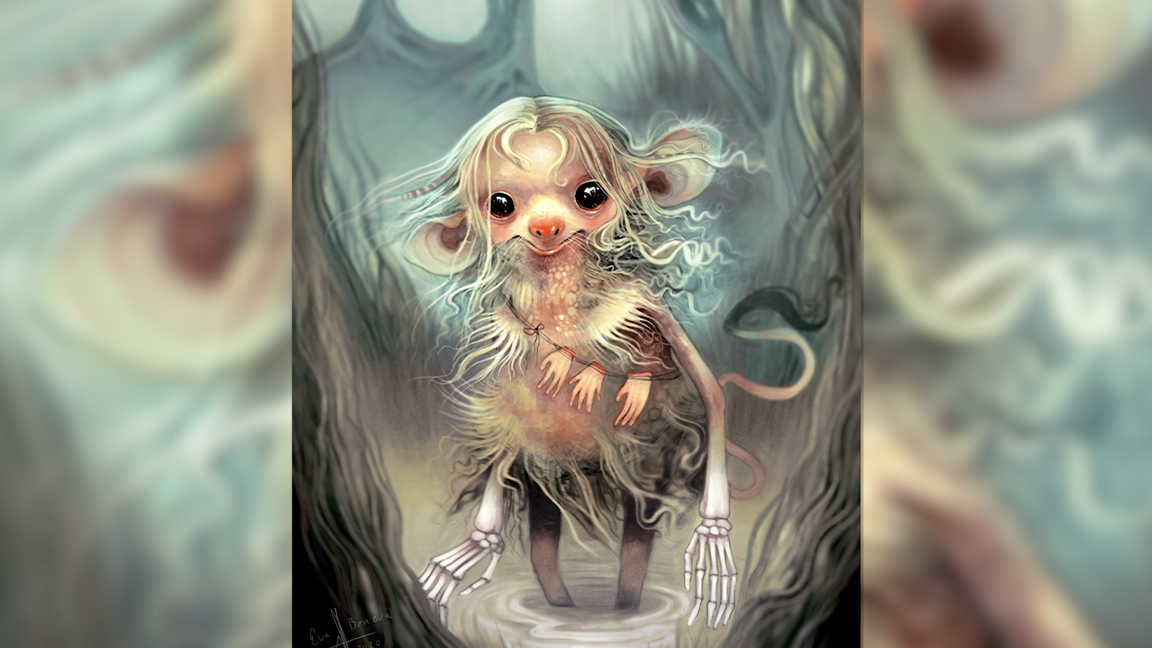
This creature began as an idea. I have a folder on my notes app called the idea box. Whenever I have a fun idea, I write it down in my notes. My best ideas come to me just before I fall asleep. Which can be pretty annoying, but if I don't write them down, I will most certainly forget. I recommend keeping a small notebook or notes app on your phone to write fleeting ideas down. I carry my phone with me at all times, so it is a great place to write my ideas down.
The idea behind the creature called George came to me at the beginning of the pandemic; it felt like I was washing my hands so much that I was removing the skin of my hand bones. So the idea came to me to create a creature that had done that very thing and maybe even expand on that. I wrote it down in my notes, and the idea behind this creature floated around in my head for a couple of months, but he would not show up on my paper the way I wanted him to. Until one day, he finally did.
When creating a story for a character or creature, I always make a mental word web. Here is a screen recording of how I created a word web on how George and his story came to be. Before we start off, English is my second language, and I am pretty dyslectic, so keep that in mind when watching this video of my writing things down.
The word web Eric (twin brother) - washing hands - punishment for not washing hands - Soap -water - Bad hygiene - infection - Dry hands - Sickness - cleaning - OCD -Erosing - Creepy but Cute - Dangerously Cute - Means Well - Collector - Helping people - Killing People.
I now have a story: Meet George, a creature that loves to wash hands. He has washed his own hands so many times that he has scrubbed away his flesh leaving only the hand bones behind (the cleanest bones you will ever find). His goal in life is that he wants to wash other people's dirty hands. He "borrows" people's hands, cleans them, and returns them to their owners. Often killing the owner in progress. So If you want to keep your hands and avoid a visit from George… WASH YOUR DAMM HANDS (with soap)
The accident: the chillimander
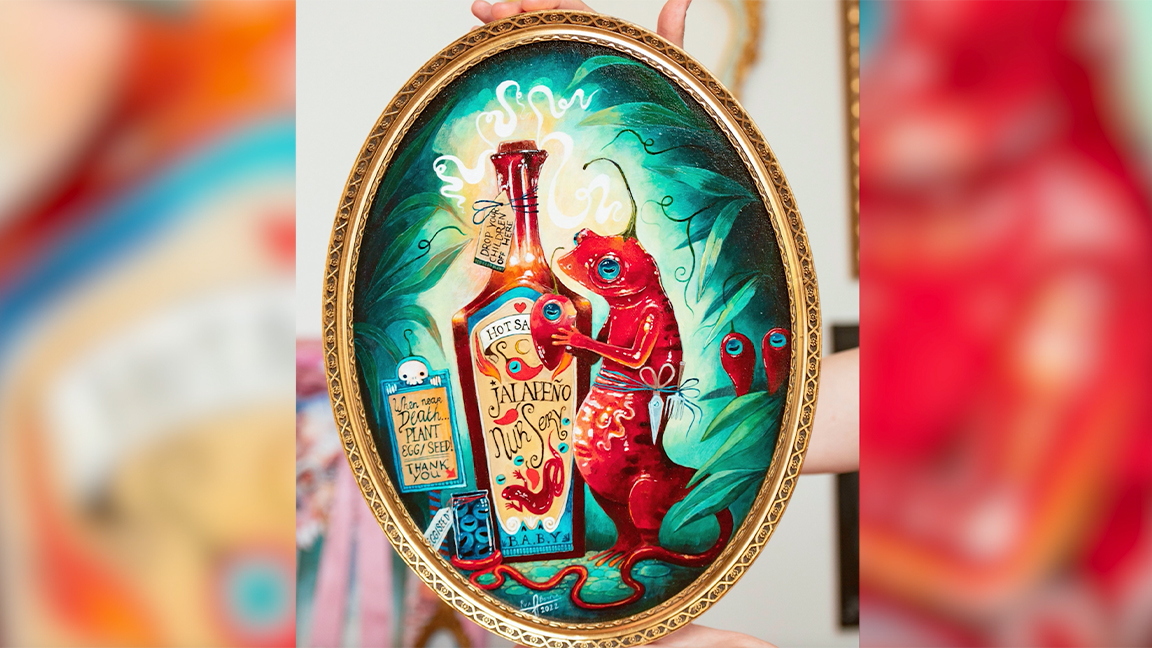
The Jalapeno Nursery: The idea of this painting came to me because of a misunderstanding. I expanded on this misunderstanding and created this painting.
I joined an art challenge where I had to create a new painting every day in October. The theme of that day was a salamander. And honestly, I had no idea what I would paint that day. So I decided to sketch and see where it brought me. First, I made a salamander on a chilly pepper. I told my partner how I was unhappy with the idea. We had a slight miscommunication, and he thought I said that the salamander WAS the chili pepper. He commented that it was actually an excellent idea because the stem could be a tiny hat. I immediately ran back to my drawing tablet and finished the painting. I was so happy with the result of this miscommunication that I decided to create another painting of Chillimander that would expand on its story.
The start of this word web was the miscommunication that resulted in the Chillimander. Here is a word web for the final painting where I show how the rest of his story came to be.
The word web Salamander - Chillimander - Eggs - Seeds - Hot Sauce - Spicy - Jalapeno - Baby Chillimander - The older, the more spicy -Hot Sauce bottle - Plant - Chilli plant -Garden - Gardener - Parents - Jalapeno Parents - Jalapeno Nursery
I now have a story The plant species called the chillimander has a very peculiar way of reproducing. I shall describe its life circle. When a grown chillimander (the older the chillimander specimen, the spicier) is near death, the creature will plant an egg/seed. This egg/seed will grow up to be a small jalapeño baby.
When a jalapeño is fully grown, the parent chillimander will harvest the jalapeño baby. To keep the baby safe and healthy, they are stored inside a large bottle of hot sauce called "The Jalapeño Nursery" (great sauce). Inside this nursery, the jalapeño will develop into a little chillimander (grow arms, legs, and a tail).
It will crawl out of the hot sauce bottle when it has all its limbs. After that, the young chillimander will help protect the garden where the baby jalapeños grow. When it reaches adulthood, it will be a full-grown gardener and receive gardening tools to maintain and keep the garden healthy. When the chillimander dies of old age, it leaves behind no skeleton, just a little blue egg/seed.
The grower: the Candle Wax Unicorn
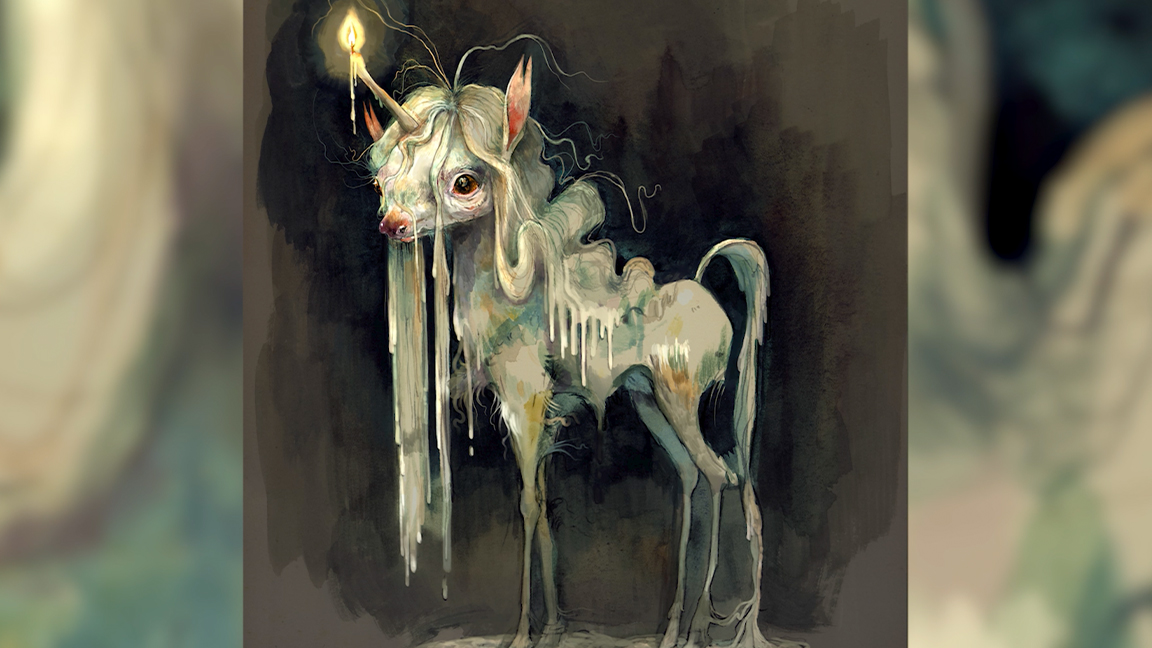
Most of the time, when I create my art, I don't actually have an idea or starting point. I just start sketching and let the doodles lead me. I usually have to draw multiple pages before I finally have something worth showing. I typically illustrate at night because I don't need daylight for colour, I am most relaxed, and I like watching horror games play-throughs, or youtube videos to entertain me.
I sketch for pages and pages. While sketching, I write small notes down around my creatures, facts, details, or remarks and comments the creatures make that say something about their character. In this progress (as you can see), I erased a lot of sketches, started new ones, or expanded on existing ones. Sometimes inspiration just hits. I can't really explain how it works. But usually, when I really get inspired, I need to pause the video I am watching to really get into it.
When sketching, I found this unicorn. Although she was beautiful, something was missing. I kept the sketch in the back of my mind and continued on with my work. Until one day I was shopping with a friend of mine and saw a candle that looked similar to this image.
My first reaction was. "That looks like a unicorn horn candle," and then it hit me: A candle wax unicorn! When I got home, I immediately finished the design with, instead of a normal horn, a candle as a horn. I made her hair look like candle wax and finished the painting digitally. I like the design so much that I created an original painting with acrylics of this unicorn.
The idea and design of the unicorn painting really grew over time. Here is the word web I made when creating her story. The starting point was the unicorn sketch and the twirly candles:
The word web Unicorn - Horn - Candle Wax - dripping - light - nightlight - dark - afraid of the dark - melting - hot - fire - death - Forest - dark forest - alone - fear - overcoming fear - brave
I now have a story The Candle Wax Unicorn" This candle wax unicorn is afraid of the dark. When she gets scared, she lights her horn. The problem with this is the longer she lights her horn, the more she melts. She must face her fears, or the light will consume her.
Painting demo
In the rest of my video, I show and narrate a demonstration of this way of working. Storytelling from sketch to finished product. I demonstrate how I do things and hopefully inspire you to implement storytelling in your concept art.

Thank you for reading 5 articles this month* Join now for unlimited access
Enjoy your first month for just £1 / $1 / €1
*Read 5 free articles per month without a subscription

Join now for unlimited access
Try first month for just £1 / $1 / €1
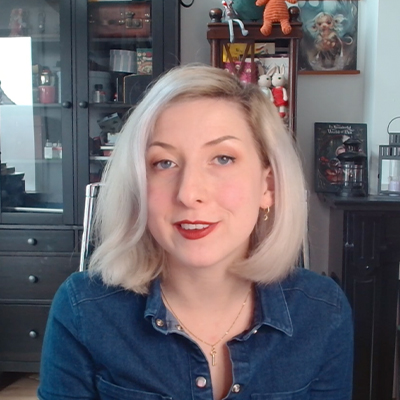
Eva Toorenent, also known as Evaboneva, is an up-and-coming creature designer and artist from The Netherlands. She is specialised in creating cute creepy art that tells a story. Her creations have been featured in multiple publications, galleries, and entertainment-based productions.
